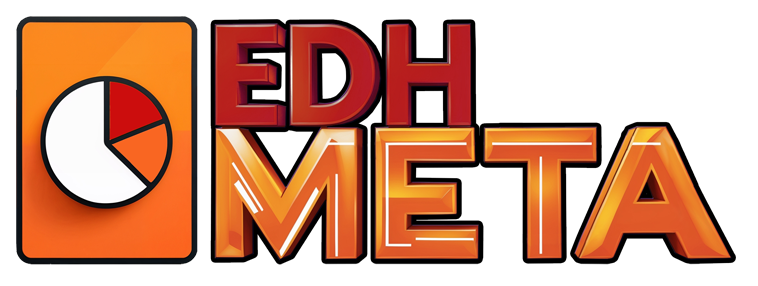Morph
Morph is a keyword ability on permanents that allows the player to pay to cast a card with the ability face down as a 2/2 colorless, typeless creature. The player can then turn that creature face-up at any time they could cast an instant by paying a variable Morph cost printed on each card. Many permanents with morph have additional triggered abilities that trigger when they are turned face-up (see Bane of the Living), and some other permanents trigger when a different card is turned face up. Morphing doesn’t use the stack.
With the increase of power and a tilt towards proactive games, the base rate of 3 mana for a mere 2/2 with a secondary mana cost is in an awkward spot, so Morph is unlikely to return.
From the Comprehensive Rules (November 8, 2024—Edge of Eternities)
- 702.37. Morph
- 702.37a Morph is a static ability that functions in any zone from which you could play the card it’s on, and the morph effect works any time the card is face down. “Morph [cost]” means “You may cast this card as a 2/2 face-down creature with no text, no name, no subtypes, and no mana cost by paying {3} rather than paying its mana cost.” (See rule 708, “Face-Down Spells and Permanents.”)
- 702.37b Megamorph is a variant of the morph ability. “Megamorph [cost]” means “You may cast this card as a 2/2 face-down creature with no text, no name, no subtypes, and no mana cost by paying {3} rather than paying its mana cost” and “As this permanent is turned face up, put a +1/+1 counter on it if its megamorph cost was paid to turn it face up.” A megamorph cost is a morph cost.
- 702.37c To cast a card using its morph ability, turn it face down and announce that you’re using a morph ability. It becomes a 2/2 face-down creature card with no text, no name, no subtypes, and no mana cost. Any effects or prohibitions that would apply to casting a card with these characteristics (and not the face-up card’s characteristics) are applied to casting this card. These values are the copiable values of that object’s characteristics. (See rule 613, “Interaction of Continuous Effects,” and rule 707, “Copying Objects.”) Put it onto the stack (as a face-down spell with the same characteristics), and pay {3} rather than pay its mana cost. This follows the rules for paying alternative costs. You can use a morph ability to cast a card from any zone from which you could normally cast it. When the spell resolves, it enters the battlefield with the same characteristics the spell had. The morph effect applies to the face-down object wherever it is, and it ends when the permanent is turned face up.
- 702.37d You can’t normally cast a card face down. A morph ability allows you to do so.
- 702.37e Any time you have priority, you may turn a face-down permanent you control with a morph ability face up. This is a special action; it doesn’t use the stack (see rule 116). To do this, show all players what the permanent’s morph cost would be if it were face up, pay that cost, then turn the permanent face up. (If the permanent wouldn’t have a morph cost if it were face up, it can’t be turned face up this way.) The morph effect on it ends, and it regains its normal characteristics. Any abilities relating to the permanent entering the battlefield don’t trigger when it’s turned face up and don’t have any effect, because the permanent has already entered the battlefield.
- 702.37f If a permanent’s morph cost includes X, other abilities of that permanent may also refer to X. The value of X in those abilities is equal to the value of X chosen as the morph special action was taken.
- 702.37g See rule 708, “Face-Down Spells and Permanents,” for more information about how to cast cards with a morph ability.

History
Morph came about because the rules team was trying to figure out a way to make Illusionary Mask and Camouflage work.[4] The answer was to define face-down cards as creatures with power and toughness. The rules team realized the solution led to a mechanic. Cards could be cast face-down and then, for a cost, could be later turned face-up. As all face-down creatures were the same, it would create a sense of mystery. The rules team pitched the idea to Mark Rosewater, who loved it.[5] The ability first appeared in Onslaught block[6][7][8][9][10] and was revisited in the Time Spiral block.[11][12] Most morph creatures in these sets had a visual cue in their art that represented the mysteriously uniform “morph shell” from which the morph creature emerges. It’s that spider-shaped creature shell that is represented in Onslaught’s expansion symbol ().[13] These “clay spiders” can be seen in the art for Dermoplasm and several other cards.[14][15]
Morph returned again in Khans of Tarkir.[16][17] The mechanic was now visually represented as a swirl of draconic magic, used as a disguise.[18][19] Fate Reforged, The second set of the Khans of Tarkir block featured manifest, the proto-morph from Tarkir‘s past.[20] Morph, megamorph and manifest all reappeared in Commander 2019.[4] The Doctor Who Cyberman mechanic plays in a similar space. When Khans of Tarkir was released on Magic: The Gathering Arena, the swirl of draconic Morph magic was used as the ability’s icon.
Double Strike in practice
Morph is a disguise ability that plays on your opponents mind trying to deceive what’s underneath Bane of the Living is a great example, it gets played by and on the later turns becomes a Sludge effect diminishing creatures power and toughness and even taking a few creatures out of the batllefield.






